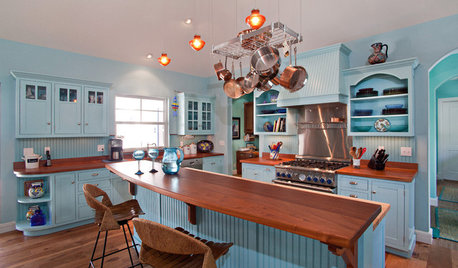I know it's long, but I'm anal about details, and you can never be too safe with electricity.
I am wiring up my external garage for use as a personal auto-shop. Please review my plans and tell me what you think. I do not have a copy of the NEC yet, the Florida Code laws I recently purchased did not include it as expected. I have talked to an electrician at Lowes and reviewed a couple of electrical books that I have. I am attempting to use the correct terminology so feel free to correct me if I am referring to something incorrectly.
My current house breaker is a 150 amp breaker. My external garage currently has one 20 amp (12 ga wire) branch which operates the overhead lights (8 4-bulb T-10 fluorescent light ballasts), 5 double-outlet boxes, and a 1/2 HP 115v, single phase roll-up garage door opener. (I will leave this branch in place, but it will be reduced to two double outlet boxes and the garage door opener. One fluorescent bulb will be plugged into one outlet for emergencies). All new wiring will be done for 20 amp circuits or greater. I want to be able to handle electric tools when plugged in, and be able to expand circuits in the future.
SWITCHES
My switch box will consist of 5 gangable boxes and 1 double-socket box (attached below with an EMT connection). The switch box which will be connected to a 4 11/16" X 2 1/8" J-box with 3/4" EMT. All switches are 20 amp switches. The J-box will be affixed to the wall, below the ceiling. 12/2 NM-B romex will feed the box from the different circuits. All switches will be end-line switches. The 3/4" EMT will contain individual 12 ga wires. (My fill capacity for this J-box is 18. I will be using 14 wires, with possible later expansion of a switch (2 wires). I was planning on using the EMT as the ground, with the ground wire from the feeding romex grounded to the J-box, as well as the the neutral bar in the sub-panel [correct me if this is wrong]).
OUTLETS
All my outlets will consist of double outlet boxes (4 outlets). The circuits in this branch consist of 12/2 romex. The romex is protected below the ceiling line to the box by 3/4" EMT. All EMT is capped with a plastic bushing to protext romex.
SUB PANEL
I will need 6 branches in the garage, 3 of which will need to supply 240 single phase power to major appliances (auto lift, AC, air compressor). I will run power from my main breaker to a sub-panel in the garage. This run will exit the main breaker box on a 75 amp (or 100 amp) breaker, exit the house in a 2 1/2" PVC conduit, which travels under the concrete sidewalk, and up the inside of the concrete block wall of the garage. It exits the concrete block and enters 2 1/4" EMT to the sub-panel. 110 to each busbar and a neutral to the neutral bar. (Is there a need for a ground wire? What size/type conductors should I use)? I am trying to decide whether to run the sub-panel off of a 75 amp breaker or a 100 amp breaker. I have measured each busbar in the main breaker box for max load on start up of all major appliances. I don't remember these numbers I'll have to get them when I get to work where they are written down. I am inclined to use a 75 amp breaker. 12/2 romex will run out of the sub-panel, protected by 2 1/4" EMT. The romex will be connected to various circuits in 1-2 4 11/16" J-boxes at the top of the 2 1/4" EMT above the sub-panel.
The 6 branches will consist of the following circuits (Table 1). (I need an explanation on 240 V circuits to include info about the conductors and breakers). The sub-panel is a GE wafer(?)-style (really thin breakers) 8 position breaker box [PowerMark Gold 125Amp 3 wire].
Table 1
_______________________________________________
Branch 1: Air Conditioning (240v, 30 amp breaker)
Branch 2: 8 4-bulb T10(?) fluorescent overhead lights, 2 double-outlet boxes, 2 circuits. Longest run is 45', 12/2 romex. (light ballasts are made with 16 ga wires).
Branch 3: Spot lights - 8 x 100 watt bulbs (2 bulbs per unit, 4 units). The spotlights are evenly distributed on two circuits. Longest run is 55' 12/2 romex, 20 amp breaker and switch.
Branch 4: Automotive lift (240, 30 amp, single phase). Have not purchased the wire/cable yet. Run will be 20' long.
Branch 5: Air compressor (240, 30 amp, single phase [21 amp peak power]). Have not purchased wire/cable yet. Run will be 23' long.
Branch 6: 6 20-amp double-outlet boxes, one circuit. 12/2 romex. Cables will combine in a 4 11/16" J-box above sub-panel. Power will run 6', from sub to J-box, on 12 ga wire, inside 3/4" EMT.
---------------------------------------------------------
A future branch will consist of an exhaust fan to vent automotive exhaust.




















Joe_CamelOriginal Author
joed
Related Professionals
Cibolo General Contractors · Murraysville General Contractors · Chowchilla General Contractors · Coffeyville General Contractors · Dallas General Contractors · Enfield General Contractors · Panama City Beach General Contractors · Winfield General Contractors · Lodi Solar Energy Systems · Framingham Center Home Automation & Home Media · Hialeah Gardens Home Automation & Home Media · Miami Springs Home Automation & Home Media · San Jose Home Automation & Home Media · St. Louis Home Automation & Home Media · West Hollywood Home Automation & Home MediaRon Natalie
Joe_CamelOriginal Author
kurto
Joe_CamelOriginal Author
stlrocker